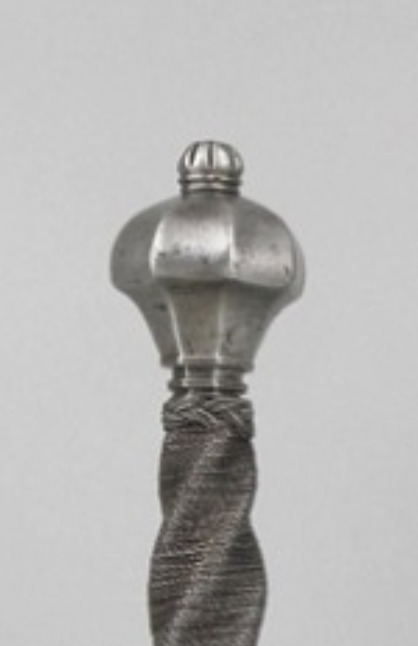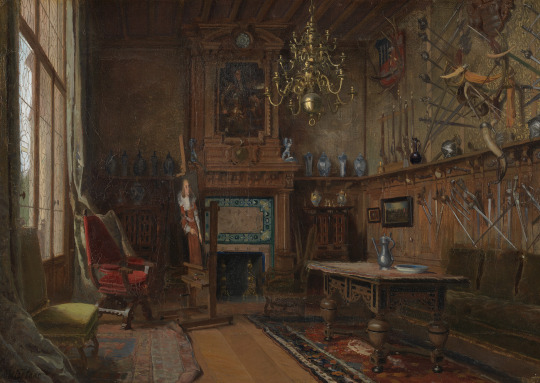#arms and armor
Explore tagged Tumblr posts
Text
Here are 543 images (1.5GB) of items at the Philadelphia Museum of Art arms and armor exhibit You're free to use them for anything, even commercially. I tried to focus on details not usually represented in available reference material
Here's a small sampling:




3K notes
·
View notes
Text

i was watching k-pop demon hunters and the SECOND i saw constellations on rumi's sword i was like. oh i know this one. from this specific post i reblogged one time three years ago

love being able to trace artistic inspiration!
#keeping it fun and funky fresh#i am a parody of myself#kpop demon hunters#well upon further investigation i reblogged as recently as october 2024. so. that makes me feel better#just didn't tag it as ''swords''#swords#arms and armor#this does not constitute a spoiler#i loooooove their magic weapons so much
770 notes
·
View notes
Text









A handy guide to share with you non-swordy friends.
(Found on Facebook HEMA group).
#swords#arms and armor#hema#historical european martial arts#sword lesbian#larp#historical reenactment#sword nerd#fencing#fuck ben shapiro#I've studied the blade#medieval weapons#sca#society for creative anachronism#buhurt#helpful tips
702 notes
·
View notes
Text

Last year I done some outfits for Lacazette (x) including casual and stage gear, I wanted to do some armour for him but undecided between buhurt or LARP. After spending more time learning how a set of armour work and look into a lot of fabulous manuscripts I decide jousting is his hobby now :))) 🦢🦢 He's not a professional jouster but he's well served in the sport, an intense opponent who loves wreaking people. He has logged thousands of hours in his armour, run thousands of joust courses, fought on foot and in the tourney. The Norwegian 🦇 The Belgian 🦢 The Arbëreshë 🐬 The Brit ❤️
#franck lacazette#my ocs#oc art#armor#armour#knight armor#english medieval armor#metalhead bass player historical nerd who specialised in European arms/ armour of the medieval and Renaissance periods + chivalric combat#yep that's him#i like to think he has a master degree on the subject now#knight core#medieval armor#jousting armor#frogmouth helm#plate armor#frog helm#art#arms and armor#artists on tumblr
870 notes
·
View notes
Text
Bevor:



Gorget:



(but a bevor is a type of gorget! yeah, but it's unique enough that it has its own name and function so we're splitting them up for the sake of a dumb post)
to start your research: Bevor, Gorget
#ive talked a big game about gorgets but the bevor has always been there for me#plus its almost always paired with a sallet and we all know how I feel about those#arms and armor#armor kink#knight kink#my post
353 notes
·
View notes
Text


Keris from Bali with an 18thC blade in 19thC dress Often the original intention that the keris has magical and spiritual qualities is ignored, and the keris just considered an object or a weapon. Here pamor wiji timun (cucumber seeds) and kulit semangka (watermelon rind) increases authority and popularity of owner and aids in spiritual and material wealth.
168 notes
·
View notes
Text

Elements of a suit of armor (steel, gold, and copper alloy) for a light cavalryman, made in Milan, Italy, ca. 1510, but decorated with fluted surfaces "in the German fashion" (alla Tedesca). The band on the breastplate depicts the Virgin and Child in the center, flanked by St. Paul (right) and St. George (left). The gorget (collar) bears a representation of the Trinity.
There are two Latin inscriptions on the armor. The first, on the breastplate, reads CRISTVS RES (i.e. REX) VENIT IN PACE ET DEVS HOMO FACTVS ES: "Christ the King came in peace, and God was made human". The second, across the top of the backplate, is a slightly modified version of the Vulgate text of Luke 4:30: IESVS AVTEM TRANSIENS PERMEDIVM IL[L]ORVM IBAT ("But Jesus, passing through the midst of them, departed").
This suit of armor is now in the Arms and Armor collection of the Metropolitan Museum of Art, New York City, NY, USA. Photo credit: Metropolitan Museum of Art.
#art#art history#arms and armor#suit of armor#Italy#Italian art#16th century#16th century art#Metropolitan Museum of Art
115 notes
·
View notes
Text
#FrogFriday 🐸:

Oval Tsuba (Sword Guard) in the Shape of a Frog Japan, 17th-19th c. Iron, copper, silver, gold H 9.0 cm x W 8.5 cm x D 0.4 cm
Rijksmuseum AK-MAK-1077
#animals in art#frog#Frog Friday#metalwork#tsuba#arms and armor#sword guard#Japanese art#Rijksmuseum
97 notes
·
View notes
Text
Sword of the day (4/11/2025:) Complex-hilted longsword from the Wallace Collection (inv. A486)

I'll quote the museum's description of the weapon directly:
Longsword, the hilt made up of a faceted, pear-shaped pommel, with a button; spirally molded, wire-bound grip; horizontally recurved crossguard of octagonal section terminating in faceted knobs; hilt arms, double side-rings, enclosing double shell-guards, one of which is fluted, the other pierced with stars and quatrefoils; broad double-edged blade with shallow hollow, incised on each side with the maker's mark. There are also traces of an inscription and decoration of small crosses inlaid in copper alloy, much worn. The mark upon the blade is found in conjunction with the wolf mark on several swords in the German Historical Museum, Berlin; in the Musée de l'Armée ( J 116); Estruch Collection, 679, pl. CXXXV; and sometimes in conjunction with the crozier mark (two-handed sword, German Historical Museum, Berlin). Compare also Musée de l'Armée, J 141; Vienna (Böheim, Waffenkunde, p. 674); and The Hermitage (Lenz, p. 301), on an Oriental sword with European blade. This type of inlaid mark was used over long period [sic.]
The museum description doesn't mention the blade, but it looks to me like a hexagonal cross-section with a shallow fuller down the first two-thirds or so. It also doesn't mention the pretty knot-work at the ends of the grip! "Turk's head knots" were commonly used to finish off a wire wrap in this way.


The sword is German, from a time when longswords existed more in a sporting context than on the battlefield. Already the longsword's use was beginning to decline; over the course of the 17th century, it fell out of vogue among the German aristocracy in favor of the rapier. Perhaps the owner of this weapon was of a somewhat "old-fashioned" disposition, studying under the German school of fencing championed by Joachim Meyer, Paulus Hector Mair, and the like. Length: 104.3 cm Width: 4.9 cm Weight: 1.985 kg Provenance: German Date: early 17th century (hilt)
Source: Wallace Collection
75 notes
·
View notes
Text

Louvre | Лувр | 2025
54 notes
·
View notes
Text

Knights fight for trans rights! By hedgehology
#hedgehology#queer artist#artists on tumblr#my art#trans pride#trans rights#digital art#trans positivity#medieval#squirrel knight#squirrel#medieval armour#art#knight#knightcore#armour#swords#arms and armor#affinity designer#trans art#transgender#trans rights uk#disabled artist#medieval art
72 notes
·
View notes
Text

Coen Metzelaar, The Study in the Willet-Holthuysen Villa in Le Vésinet, c. 1875-1885, oil.
#coen metzelaar#dutch art#dutch artist#dutch painter#Willet-Holthuysen#willet-holythuysen museum#19th century#19th century art#interior#paintings#interior design#period design#nineteenth century interior#art#artwork#painting#design#drawing#decor#period decor#zimmerbild#oil painting#oil on canvas#le vesinet#study#arms and armor
54 notes
·
View notes
Text

Spanish archaeologist Manuel Esteve wearing a Corinthian helmet that he found - 1938, near Jerez, Spain.
855 notes
·
View notes
Text

German box-shaped breast for @scumpatrol tiefling Lilith ❤️🖤
#lilith#tiefling#bg3#baldur's gate 3#arms and armor#Kastenbrust armour#german armor#knight armor#armour
463 notes
·
View notes
Text

Swords, Daggers, and other Sharp things | Risograph Print
Etsy | ko-fi
#risograph#artists on tumblr#printmaking#riso print#print design#risoprint#graphic design#my art#swords#daggers#arms and armor
159 notes
·
View notes
Text

Sana’a, Yemen, late 19th or early 20th century
65 notes
·
View notes